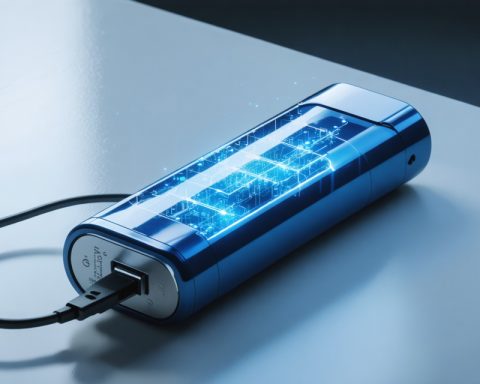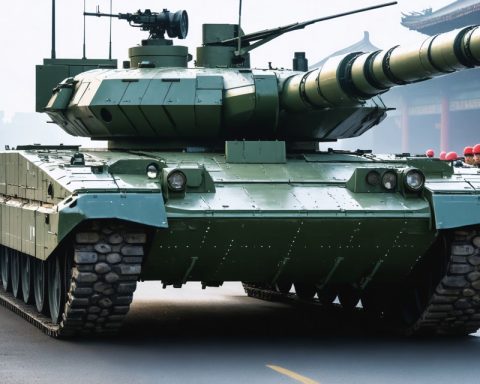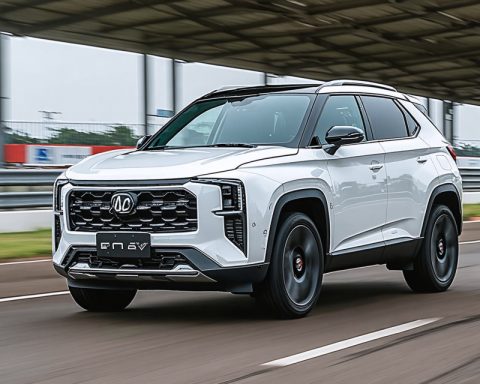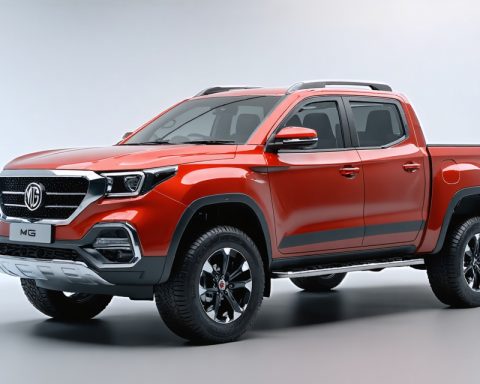- The aviation industry is undergoing a shift towards electric planes, driven by advancements in battery technology.
- Key innovations include lithium-sulfur and solid-state batteries, offering higher energy density than traditional lithium-ion options.
- Electric aircraft promise cleaner, quieter, and more efficient flights, reducing carbon emissions and noise pollution.
- Lower operational costs of electric planes could make air travel more accessible and widespread.
- Challenges include managing battery weight and ensuring safety, but significant investments are being made to address these issues.
- Companies like Eviation are already testing electric aircraft, potentially reshaping regional air travel.
- The transition to electric aviation is part of creating a sustainable, connected future, transforming our relationship with air travel and the environment.
In the expansive skies, a quiet revolution is taking place—one that trades the roar of engines for the whisper of propellers. Emerging battery technologies are electrifying the aviation industry, bringing us closer to a future of cleaner, quieter, and more efficient flight.
Imagine soaring through the air, only the wind as your soundtrack. The heart of this transformation lies in breakthrough battery solutions that promise to reshape how we think of air travel. Lithium-sulfur and solid-state batteries are the vanguards of this revolution, offering greater energy density compared to conventional lithium-ion batteries. This leap in capacity allows aircraft to fly farther on a single charge than ever before, making electric planes not just a dream, but an imminent reality.
The allure of electric aviation is not solely about diminishing carbon footprints. Picture this: gliding over majestic landscapes with minimal noise pollution. Communities near airports stand to benefit from quieter skies, leading to improved quality of life. Moreover, the reduced operational costs could democratize access to air travel, knitting the world together more closely with each economical flight.
However, challenges remain. The weight of current battery systems still poses engineering puzzles, with researchers feverishly working to refine lightness without sacrificing power. Safety concerns, too, must be meticulously addressed to prevent mishaps in the skies.
Yet, industries and governments are investing billions, betting on a future where jets and propellers are part of a sustainable ecosystem. Enterprises like Eviation, backed by Boeing, are already testing fully electric aircraft capable of carrying passengers across regional distances.
Ultimately, the true power of battery technology lies not just in what it enables us to do, but in how it transforms the way we connect with our planet. As we edge closer to this electrifying horizon, the promise of greener aviation signals a profound shift in how we engage with the sky above.
Conclusion: Battery technology is ready to redefine aviation. The technology challenges are immense, but the potential rewards—a sustainable, quieter, and more connected world—are within reach. Keep an eye on the horizon because the next time you look up, you might just see the future silently soaring by.
The Electric Future of Aviation: What You Need to Know
In the expansive skies, a quiet revolution is electrifying the aviation industry, propelled by groundbreaking battery technologies. This shift promises not just cleaner and quieter air travel, but a more connected and sustainable world.
Key Battery Technologies Reshaping Aviation
The aviation industry is currently exploring two leading battery technologies: Lithium-sulfur and solid-state batteries. These innovations offer significantly greater energy densities compared to conventional lithium-ion batteries, allowing for longer flights on a single charge.
Lithium-Sulfur Batteries: Known for their high energy density, these batteries hold the potential to triple the capacity of traditional lithium-ion batteries. They are lighter and less expensive, making them an attractive option for electric aviation. However, they face challenges in terms of cycle life and stability. [Research Insights](https://sciencedirect.com/science/article/abs/pii/S2542435120305534) suggest ongoing development is essential to improve their longevity and safety.
Solid-State Batteries: These offer another promising path forward, providing increased safety and energy density by replacing liquid electrolytes with solid ones. Solid-state batteries are inherently safer, reducing cell swelling and flammability risks. [MIT Technology Review](https://www.technologyreview.com/topic/energy/) highlights these as a critical component for the future of aviation.
Real World Use Cases and Emerging Trends
Companies such as Eviation are at the forefront, with their all-electric aircraft “Alice” undergoing test flights capable of carrying passengers over regional distances. The rise of electric small aircraft and urban air mobility solutions presents new opportunities for reducing short-haul flight emissions.
Challenges and Limitations
Despite the promise, electric aviation faces several hurdles:
– Weight: Current battery systems add significant weight to aircraft, impacting performance and range. Engineers continue to work on optimizing designs to balance power and lightness effectively.
– Infrastructure: To support widespread adoption, significant investment in charging infrastructure at airports is necessary.
– Regulation and Safety: Electric aircraft must meet stringent safety standards before they can enter commercial service, needing rigorous testing and certification.
Market Forecasts and Industry Trends
The electric aviation market is expected to grow rapidly over the next decade. According to a [Report by Allied Market Research](https://alliedmarketresearch.com), the electric aircraft market is projected to reach $27 billion by 2030, bolstered by advancements in battery technology and increased environmental awareness.
Pros and Cons of Electric Aviation
Pros:
– Reduced carbon emissions and noise pollution
– Lower operational costs and maintenance
– Potential for new business models and increased connectivity
Cons:
– Current technological limitations impacting range and battery life
– Infrastructure demands requiring substantial investment
– Extended certification processes for new electric aircraft
Actionable Recommendations for Enthusiasts and Investors
1. Stay Informed: Follow industry developments and innovations by subscribing to aviation and technology news outlets.
2. Support Innovation: Consider investing in companies leading the charge in electric aviation and battery advancement.
3. Advocate for Infrastructure: Engage local governments and communities in discussions about developing the infrastructure needed to support electric aviation.
As the aviation industry continues to innovate, the future of flight promises to be more sustainable and connected. Keep an eye on the skies; the whisper of electrically powered wings might soon become our new soundtrack.

















